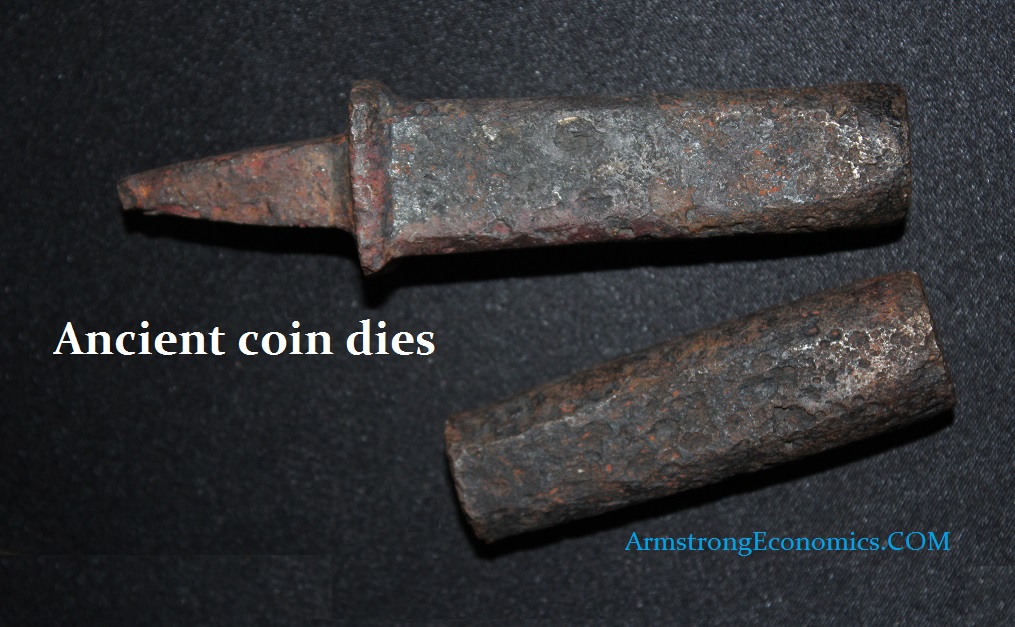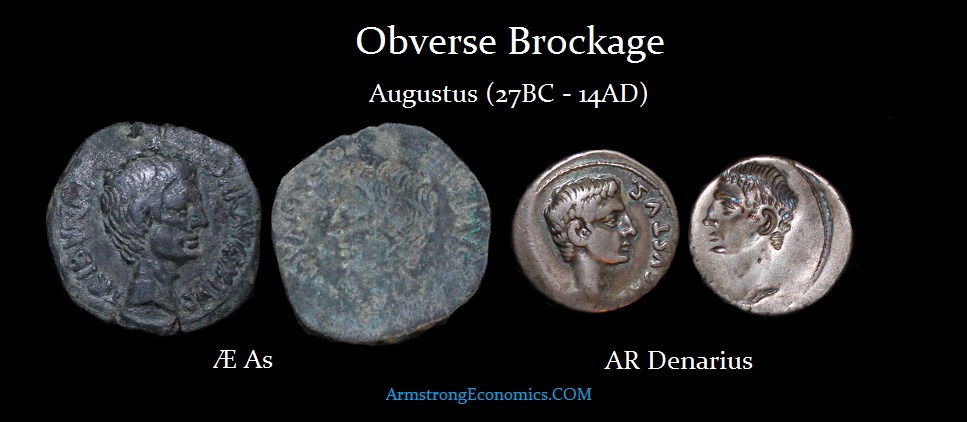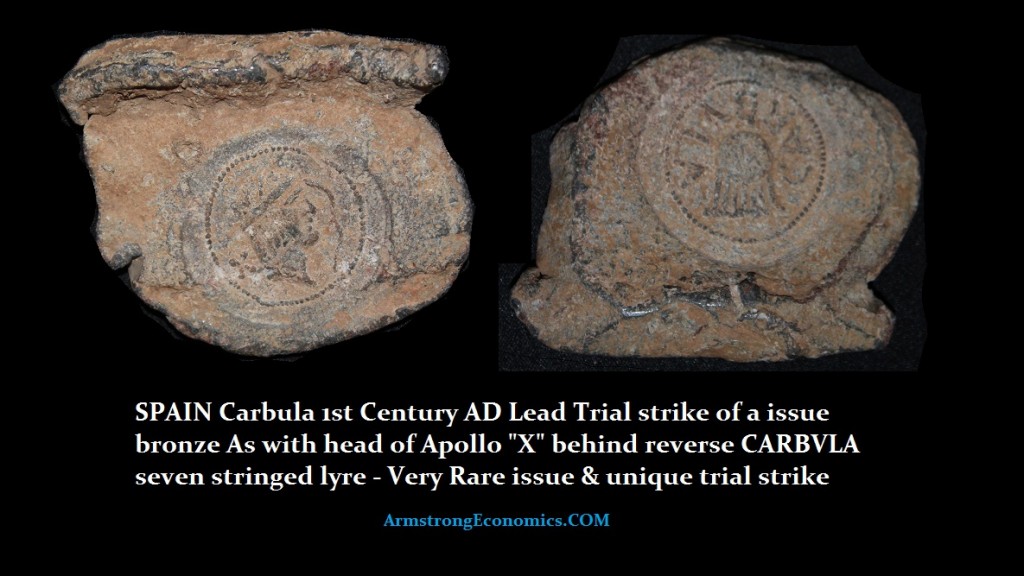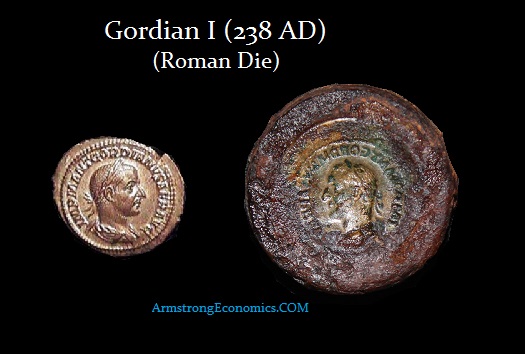 Coins were produced manually until about the mid 18th century. The basic tools were an oven for heating blanks known as a planchet, tongs for handling hot blanks, a bench on which an anvil was mounted, and a pair of dies struck with a heavy hammer to impress the design into the planchet. Each set of dies was hand carved which allows use to actually estimate the number of coins produced. It turns out that approximately 15,000 coins on average can be produced from on set of dies before they cracked. Metal dies were used to stamp the types into the planchets. Relatively few ancient dies have been found since official dies were often destroyed so that they could not be used illicitly when they became too worn or when a change in types demanded that new dies be cut. Pictured here is an extremely rare original Roman die of Gordian I (238AD) who reigned for only thirty-six days. This may be the reason this die has survived.
Coins were produced manually until about the mid 18th century. The basic tools were an oven for heating blanks known as a planchet, tongs for handling hot blanks, a bench on which an anvil was mounted, and a pair of dies struck with a heavy hammer to impress the design into the planchet. Each set of dies was hand carved which allows use to actually estimate the number of coins produced. It turns out that approximately 15,000 coins on average can be produced from on set of dies before they cracked. Metal dies were used to stamp the types into the planchets. Relatively few ancient dies have been found since official dies were often destroyed so that they could not be used illicitly when they became too worn or when a change in types demanded that new dies be cut. Pictured here is an extremely rare original Roman die of Gordian I (238AD) who reigned for only thirty-six days. This may be the reason this die has survived.
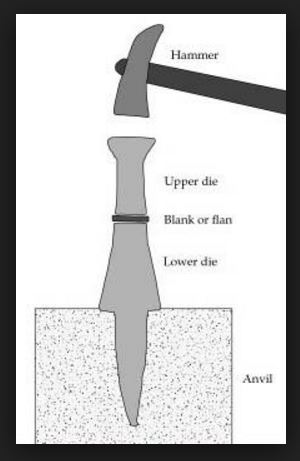 During the production of coinage prior to modern machine presses, it was more common to create what is known as a brockage error whereby such errors were caused when an already minted coin sticks to the reverse coin die and impresses the prior obverse image of the coin onto the reverse of the next blank planchet, which is the round metal disk that is ready to be struck as a coin. What is produced is a coin with a a mirror image of the obverse impressed upon the reverse of the coin in most cases resulting in a two headed coin.
During the production of coinage prior to modern machine presses, it was more common to create what is known as a brockage error whereby such errors were caused when an already minted coin sticks to the reverse coin die and impresses the prior obverse image of the coin onto the reverse of the next blank planchet, which is the round metal disk that is ready to be struck as a coin. What is produced is a coin with a a mirror image of the obverse impressed upon the reverse of the coin in most cases resulting in a two headed coin.
For the most part, obverse brockages are far more common since the mint worker would have most likely notice if the coin was stuck in the opposite anvil die before striking the the next planchet. Brockage in modern coins still do take place, but are perhaps less common compared with hammered coinage prior to the 18th century.

